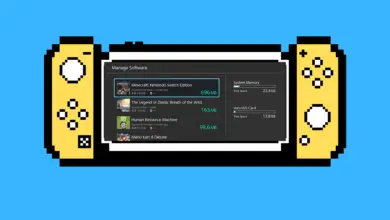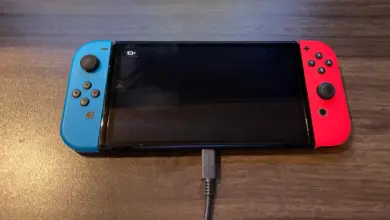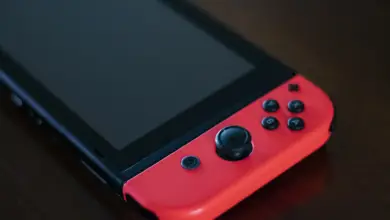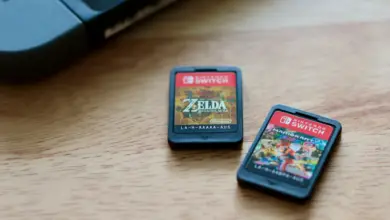What is the Nintendo Switch GPU Equivalent?

There are a lot of video game consoles out there, though the three titans of the industry have stood for decades: Microsoft, Sony, and, of course, Nintendo. Nintendo is arguably the most successful game maker of all time, and one of the oldest and longest-lasting ones, with their latest console being the console-handheld hybrid the Nintendo Switch.
The Nintendo Switch is not a powerhouse, especially compared to the PlayStation 5 and the Xbox Series X, but what is the Nintendo Switch GPU equivalent?
The Nintendo Switch uses an Nvidia Tegra X1 chip, which is not a chip one would use with a computer. Thus, if you were hoping to have a computer that has comparable power to a Nintendo Switch, your best bet would be to go with an Nvidia GTX 1650 graphics card.
But what other factors are important when determining the level of power of the Nintendo Switch? And are there any other graphics cards that are of comparable specifications to a GTX 1650?
What is the Nintendo Switch GPU Equivalent?
As we discussed, the most comparable graphics card on the market is an Nvidia GTX 1650 graphics card. However, despite the similarities, you should remember that you are not going to find a 1:1 comparison, so don’t expect that a computer you make to try to reproduce the Nintendo Switch’s capabilities will be the same. Furthermore, you need to take into account the fact that a graphics card on a PC needs to be able to actually be stronger than a Switch graphics card to be comparable.
In truth, the GeForce 9800 GTX is a more comparable device to the Tegra X1 chip included with the Switch. However, the Tegra X1 chip does not need to do as much as a 9800 GTX would have to handle. After all, the Nintendo Switch’s operating system is a lot less intensive than an operating system for a computer. The Tegra X1 has a throughput of one Teraflop, while the GTX 1650 has a throughput of three Teraflops. Essentially, the idea is that Nintendo Switch games are optimized to work with a Tegra X1 chip, but games are not typically optimized to work with graphics cards on a PC.
How much does the Nvidia GTX 1650 graphics card cost?
Whether you should get a GTX 1650 graphics card is one thing, the cost of the card is a whole other issue. The price of graphics cards tends to vary based on demand, so at times it may be cheaper, and at other times, it may be more expensive. If you were planning to buy one, expect that you will pay around $200 for a new one. It is entirely possible that you could get the graphics card at a good price, but be mindful that you only buy from trusted sellers. The GTX 1650 graphics card was originally released on April 23, 2019, and if you are not too concerned about playing the best of the best in terms of power, it should probably be good enough for your needs.
Are any other graphics cards equivalent to a Nintendo Switch?
While the GTX 1650 is the best comparison in terms of results compared to the Nintendo Switch, that does not mean that it is the only one that can be compared. The GTX 1650 actually has multiple graphics cards that it is similar to, including the Nvidia GTX 1060, the AMD Radeon RX 580 graphics card, and others.
How many frames per second (FPS) can the Nintendo Switch handle?
Now, this question is a little tricky, as the FPS can vary depending on both the way the Switch is played, as well as which Switch model you are using. For example, the Nintendo Switch Lite does not have quite as much power capacity as the original Nintendo Switch or Nintendo Switch OLED. And even with those, if you are playing either of them in handheld mode, the number of video games that can run at the Switch’s highest potential FPS is reduced.
In the best circumstances, many games on the Nintendo Switch are capable of running at 60 FPS. Some games, like Mario Kart 8 Deluxe and Mortal Kombat 11, are able to run at 60 FPS in both docked and handheld mode, while others, like Xenoblade Chronicles 2, will suffer a dip when played while undocked. Thankfully, a game like Xenoblade Chronicles 2 usually runs okay (even when undocked) when it counts the most, but nevertheless, it can be a sore spot for some people.
At times, the FPS may be capped in order to ensure that the most consistent experience can be achieved. One example of this is with the Switch port of the 2016 shooter, Doom. While it can run at 30 FPS when docked, the game has a hard cap of only 20 FPS. This ensures that the number of instances where the game chugs due to an FPS drop is kept to a relative minimum.
Can the Nintendo Switch run games at 1080p?
The answer to this question will, much like with the frames per second of your Switch, depend on what way you are playing the Switch. While playing in either handheld mode or with a Switch Lite, you will have to settle for lower resolution quality than you would on a TV. This is simply due to the fact that each Nintendo Switch console’s screen can produce only up to 720p in resolution.
Some games can get up to 1080p while docked, such as Mario Kart 8 Deluxe, which can run at 1080p at 60 FPS under the right circumstances (either solo or two-player split-screen). Meanwhile, Xenoblade Chronicles: Definitive Edition runs between 540p and 720p while docked, and 378p and 540p while in handheld mode.
There are other games, made for the more powerful PlayStation 4 and Xbox One, that has made it to the Switch, such as The Witcher III: Wild Hunt. While this game runs well on those consoles, it is only able to do 540p and 720p for handheld and docked respectively. Still, it’s incredibly impressive that they were able to get a game like that to run on the Switch in the first place.
How long are the Nintendo Switch’s load times?
Optimization of games on the Nintendo Switch plays a large part in any technical aspects of a console, the Nintendo Switch included. And unlike 1080p and 60 FPS, it is a lot more difficult to deal with long loading times, especially if they occur with a high degree of frequency. There are ways to alleviate long load times on the Switch, such as having a game load from internal storage rather than through a microSD card. There have been some pretty notorious examples of long load times in the past, notably the 2006 Sonic the Hedgehog game and Crash Bandicoot: The Wrath of Cortex. But how good do load times tend to be on the Switch in general?
Cartridge-based video game consoles, despite their limitations compared to disc-based consoles, had one clear advantage: they had comparatively fast load times. And yet, while the Switch also has cartridges, they are treated more akin to read-only SD cards. This means that, where Nintendo’s old cartridges had direct access to the memory, the Switch’s cards need to load the content as required. This means that you should expect to deal with some loading, some of which can get pretty tedious. The Legend of Zelda: Breath of the Wild, for example, has frustrating load times, although considering the scope of the game, it is understandable.
Comparatively, however, some games on the Switch have absolutely garbage load times, and often, for no good reason at all. Monopoly for Nintendo Switch, for instance, had such bad load times that they needed to do a post-release patch to fix it. To open the game and start a session, it could take players up to 10 minutes (not 1 minute, 10 minutes). Clearly, this game needed more time for quality assurance.
If you’re looking to see better load times on your Switch, the good news is that such an improvement is actually possible – so long as you’re talking about Breath of the Wild, Super Mario Odyssey, or Mortal Kombat 11. Nintendo actually added a thing called ‘Boost Mode‘, which, for a limited selection of games, overclocks the CPU in order for the games to load faster (sometimes 10 seconds faster than normal). This makes a big difference for all three, especially Breath of the Wild.
Can you upgrade the Nintendo Switch to make it more powerful?
One of the best reasons to use a gaming computer is the fact that you can upgrade and modify it over time, to the point where your computer could one day have none of the parts it originally had. While it would be nice to be able to modify consoles like the Nintendo Switch to make it more powerful, that is unfortunately not possible. It would require such an intense and laborious series of modifications that the device would not even be a Switch anymore, regardless of its ability to play Switch games.
Will the Nintendo Switch ever have a more powerful iteration?
No matter how much a person is enjoying their Switch, they may still want to see their Switch able to handle more powerful games. This leads to people hoping to see an iteration of the console that is capable of this. In truth, there has been a lot of talk surrounding the possibility of a more powerful Switch console, nicknamed the “Switch Pro”, from fans and alleged leakers alike. However, a lot of these alleged “Switch Pro” leaks, even if they come from people with a good track record of accurate leaks, have turned out to be false. However, despite the leaks being false, they may still have good reason to believe it was real.
While it is speculative why so many reliable leakers have put so much faith in the idea of a Switch Pro, a strong possibility is that the COVID-19 pandemic played a part. Assuming there were, at one point, internal rumblings about a Switch Pro, it’s entirely possible that the idea of a more powerful iteration was eventually canned due to the chip shortage. So, in this scenario, the leakers would have a basis for why they believed the claims, but the leaks themselves do not hold any merit. It’s possible that they may one day come out with a Switch Pro (or equivalent), but the older the Switch gets, the more likely that they decide to focus on a successor instead.
Will the Nintendo Switch ever get a successor?
Now, this question has a really good answer to it, which is “yes, obviously.” Nintendo, even at their weakest (the Wii U), never stopped making video game consoles. And now, with the Nintendo Switch arguably being the most successful home console they’ve ever made (107 million as of May 2022, only behind the Game Boy and Nintendo DS), it is extremely improbable that they will not come out with a new console eventually. The only real question in terms of a Switch follow-up is whether Nintendo intends to do something new, or whether they will stay safe by just making a Switch 2.
Nintendo has a tendency of trying not to do the same thing twice, at least lately. Sure, they may iterate somewhat, but there are key differences to be found between their consoles, as well as the competition. It’s also possible that Nintendo may deem making another handheld console to be too derivative, considering the fact that other companies, like Valve with the Steam Deck, appear to be doing the whole “console/computer in your hand” thing. Yet, it can’t be denied that the Switch’s hybrid functionality plays a big part in its success. It would be reasonable to expect that the next console may still be a hybrid device, but with something to set it apart from the Nintendo Switch.
- How to Pair Meta Quest 3 Controllers with Your Quest 3 Headset: A Quick Guide
- How to Charge Meta Quest 3: A Guide to Powering Up Your VR Experience
- How to Cast Meta Quest 3 to Samsung TV: A Step-by-Step Guide
- How To Factory Reset Your Meta Quest 3: A Step-by-Step Guide
- How to Power On and Off the Meta Quest 3





